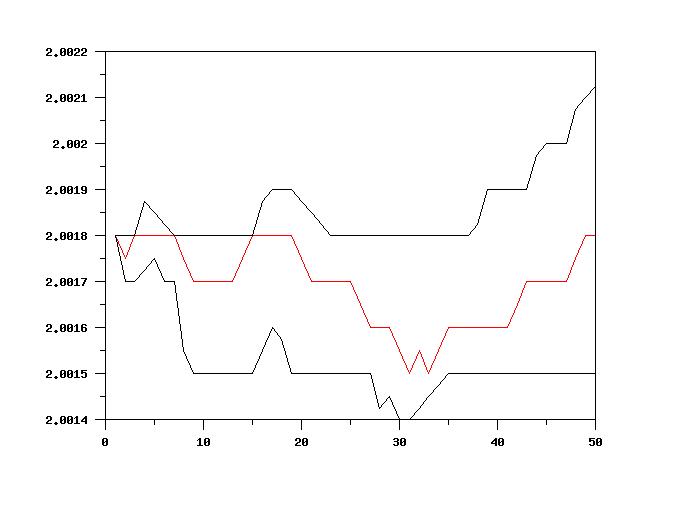

|
CUMULATIVE (LET)Name:
Although this command is most commonly used for a location statistic, it can in fact be used for any supported statistic (enter HELP STATISTIC for a list of supported statistics).
<SUBSET/EXCEPT/FOR qualification> where <y1> ... <yk> is a list of one to three response variables (depending on what <stat> is); <stat> is one of the supported statistics (HELP STATISTICS for a list); <yout> is a variable where the computed values are stored; and where the <SUBSET/EXCEPT/FOR qualification> is optional.
LET Y2 = CUMULATIVE MEDIAN Y LET Y2 = CUMULATIVE SD Y FOR I = 1 1 50
skip 25
read mavro.dat y
let n = size y
let x = sequence 1 1 n
.
let y1 = cumulative median y
let y2 = cumulative lower quartile y
let y3 = cumulative upper quartile y
.
line color red black black
.
plot y1 y2 y3 vs x

Date created: 01/07/2013 |